How to use Safari web apps in macOS Sonoma, and why you should
Posted on
by
Kirk McElhearn
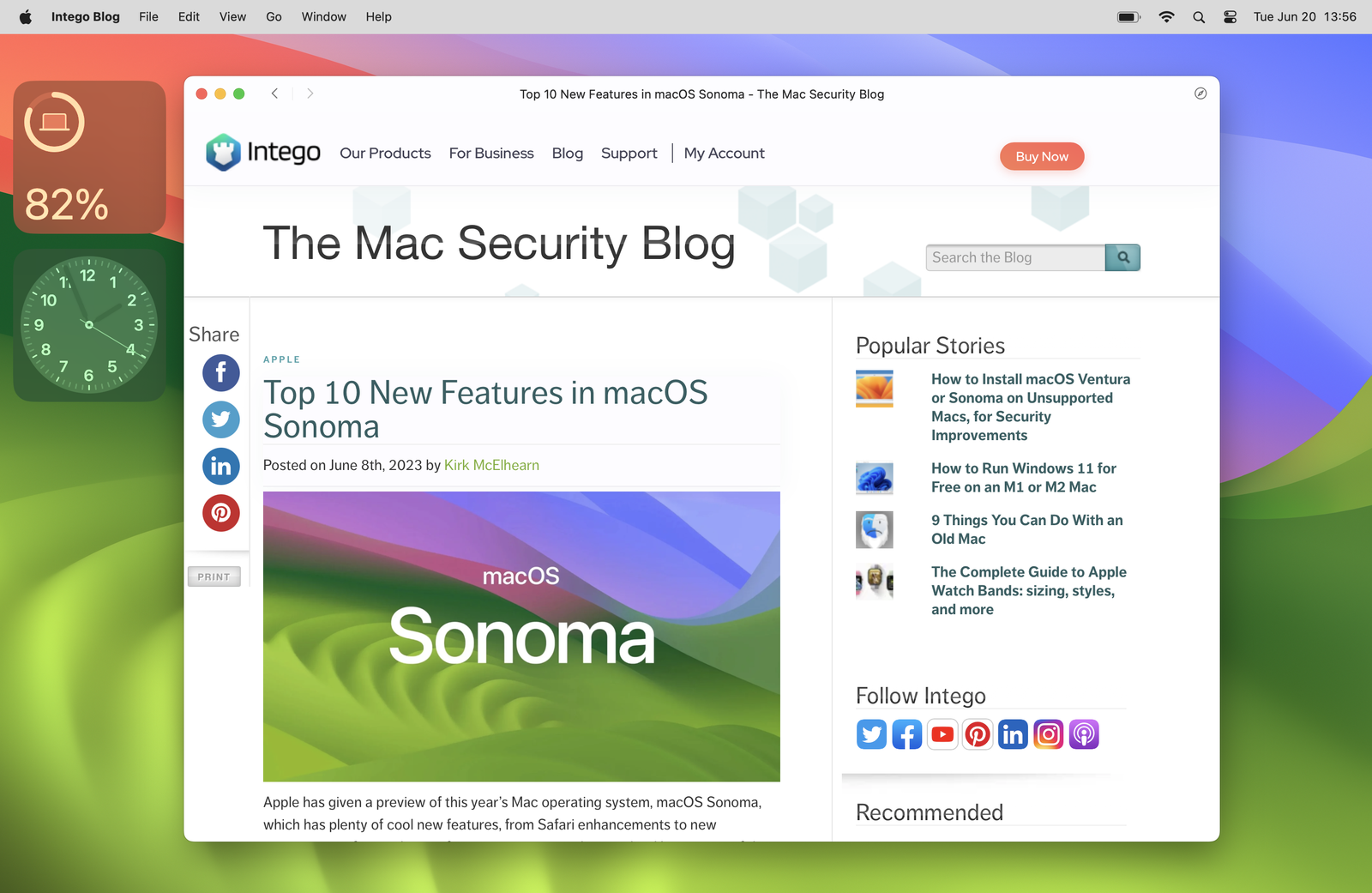
macOS Sonoma added a useful feature to the Safari web browser: web apps. Safari web apps (sometimes generically called progressive web apps) are single-site mini browsers that you can save to your Mac and launch when you want to access that site. This is something that you have been able to do on the iPhone and iPad for years.
Web apps are a great feature, and there are a lot of good reasons to use them. However, there are limitations. Here’s how Safari web apps work in macOS Sonoma, and why you might want to use them.
In this article:
- What are web apps?
- How do you save and launch a web app?
- Why should you use web apps?
- What are the limitations of web apps?
- How do you set permissions for web apps?
- How can I learn more?
What are web apps?
Web apps are small files that let you access a single website via Safari. The apps themselves don’t contain Safari; they are merely preference files that take up a small amount of space on disk, but that run Safari in a separate window. You save a web app from Safari, and you can then launch it and access the site you’ve saved.
Web apps give you access to any content on the website you’ve saved them from, but they don’t open links to other sites. If you click a link to a different site, that link opens in Safari. And you can’t add tabs in web apps.
How do you save and launch a web app?
To save a web app, go to the site you want to use, click the Share button, and choose Add to Dock. You can save the main page of a site or any individual page on the site; when you launch the web app, you see the page you saved.
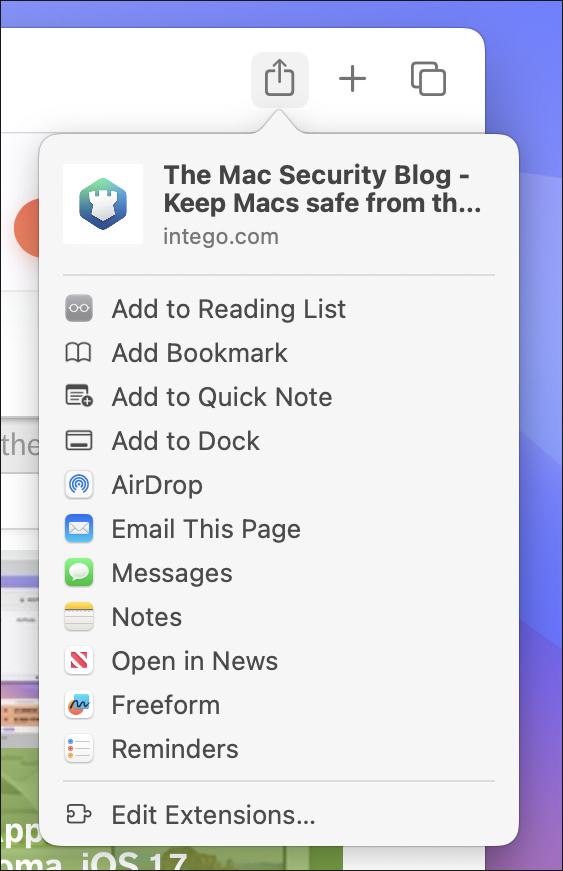
Safari displays a dialog allowing you to name the web app; change the name, or the URL, if you want.
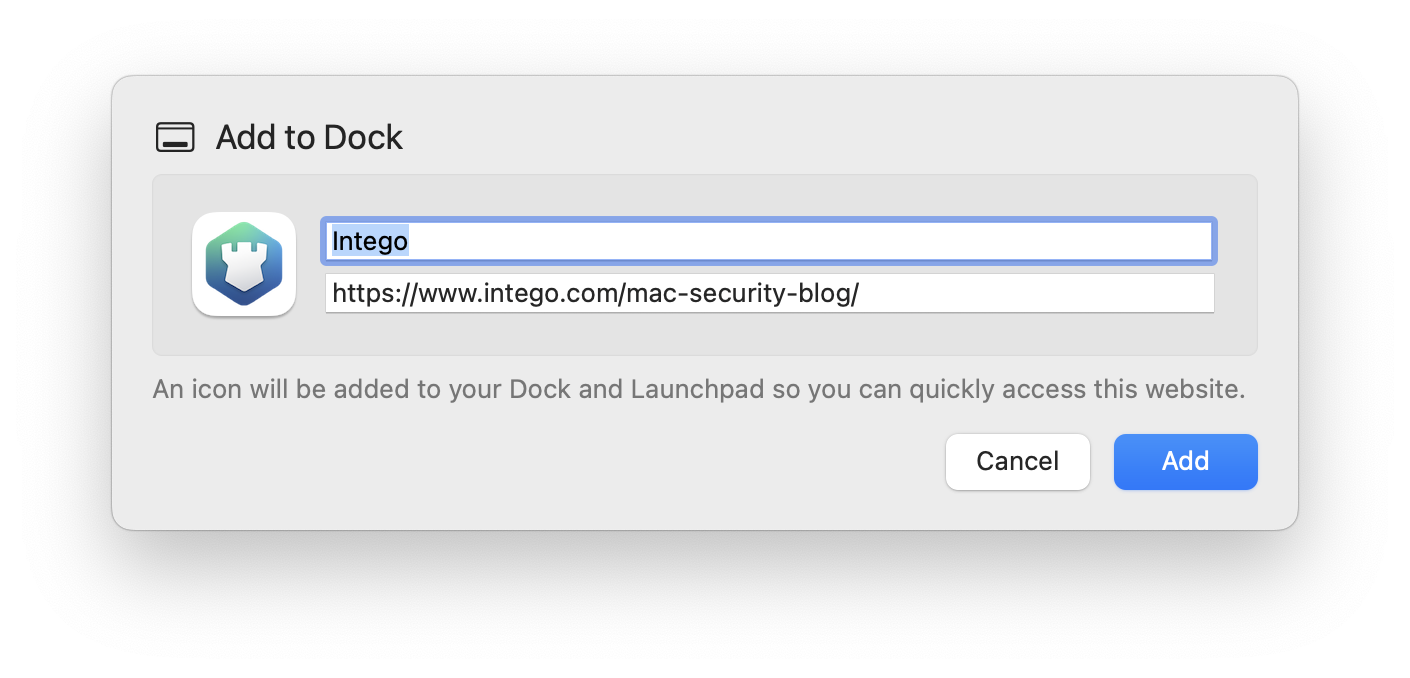
Web apps are saved to the Dock, but they are also saved to the Applications folder inside your Home folder (the folder with the house icon and your user name). You can drag a web app away from the Dock, and still access it from that Applications folder. Or you can place it anywhere, such as in a different folder or on the Desktop for quick access.
You can also launch web apps via Mission Control, Spotlight, or any application launcher.
Why should you use web apps?
Web apps provide you with a mini-browser that can only access one site. Instead of having lots of tabs in Safari, you may want to use certain sites as web apps. For example, if you use Slack or Discord, you may want to have those services in individual web apps, rather than cluttering up your Safari tabs. It’s a great way to keep quick access to your bank or other financial service. And if you want to keep track of the news, why not create web apps for the sites you visit?
Web apps have hyper minimal interfaces. There’s no address bar, no access to bookmarks or even to browsing history. However, the Back and Forward buttons work, so you can navigate within a browsing session. If you click a link to an external site, that link opens in Safari, not in the web app. You can’t open tabs in the web app, but you can open a link, on the same website, in a new window; or more correctly, a new web app for that link’s page. Right-click the link and choose Open Link in New Window.
Web apps don’t share cookies with Safari, and keep their cookies separate—which can potentially be a nice privacy benefit. But it also means you can log into one account in your main Safari browser, and a different account in a separate web app, if you need to. This can be very convenient if, for example, you manage multiple social media accounts on the same platform, or if you have multiple e-mail accounts with the same mail provider.
When you create a web app, Safari copies cookies for that site to the web apps, so you can use settings and identifiers. In many cases, if you’re logged into the site when you create the web app, you remain logged in when using the web app. (This depends on whether the site has stored the authentication state in the cookie.) Or you can log out, then log in with different credentials.
Web apps can auto-fill passwords and other information from your iCloud Keychain, so your access to websites is as smooth as it is with the full Safari.
You can enable notifications for web apps, just as you would for any website in Safari. Web apps also support Focus modes, so you can enable or disable notifications according to your Focus.
What are the limitations of web apps?
Web apps load a single website just as Safari does, but are limited in what they can do after loading the site. You’ll notice that web apps don’t have an address bar; this means that you can’t go to any ad hoc URL, and can only navigate a site through its links. This also means that you can’t search with Google or another search engine, because that’s a different site. You could, however, create a web app for Google, which would segregate your cookies from your main browsing environment, but when you click search results, they would open in Safari.
You can’t create private browsing web apps, but since they store cookies separately, and don’t intermingle your browsing history with your normal Safari browsing, there is a level of built-in privacy. You might want to create web apps for sites where you use private browsing, if all you want to do is keep websites from profiling you. But this doesn’t provide the full private browsing features, such as deleting cookies and stored data when you close windows.
Web apps can’t use extensions, so if you need extensions, such as for a content blocker or password manager, you won’t be able to access them.
You can open a site that is in a web app in Safari by choosing File > Open in Safari.
And if you visit a web page in Safari for which you have a web app, Safari will ask you if you want to open the web app:

How do you set permissions for web apps?
Just as you can set permissions in Safari, for each website, regarding access to the microphone, camera, and location, web apps have settings for this access. If you choose [web app name] > Settings, you see this dialog:
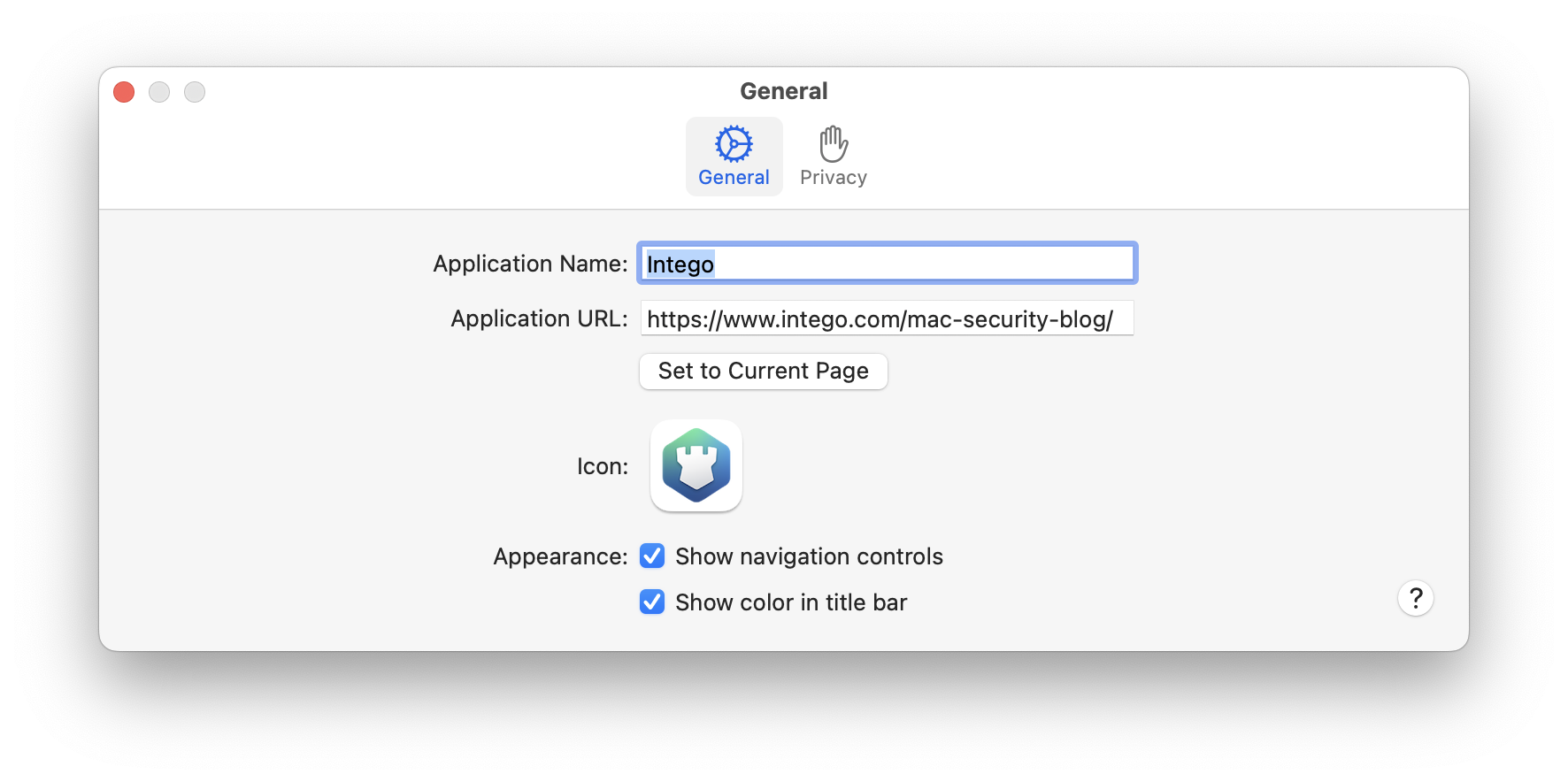
The General tab lets you rename the web app, change the icon if you want (click the icon and select an image file), disable or enable navigation controls (the Back and Forward icons and the Share sheet button), and show the website’s color in the title bar. You can also change the page the web app opens by default; you might want to do this if you have created a web app that opens the home page on a website, and would rather open a specific page. Go to that page, open the settings, then click Set to Current Page.
The Privacy tab lets you access Privacy & Security Settings; click that button to open the System Settings app and adjust permissions for the camera, microphone, screen sharing, and location access. Finally, you can clear any stored website data, including cookies, by clicking the appropriate button.
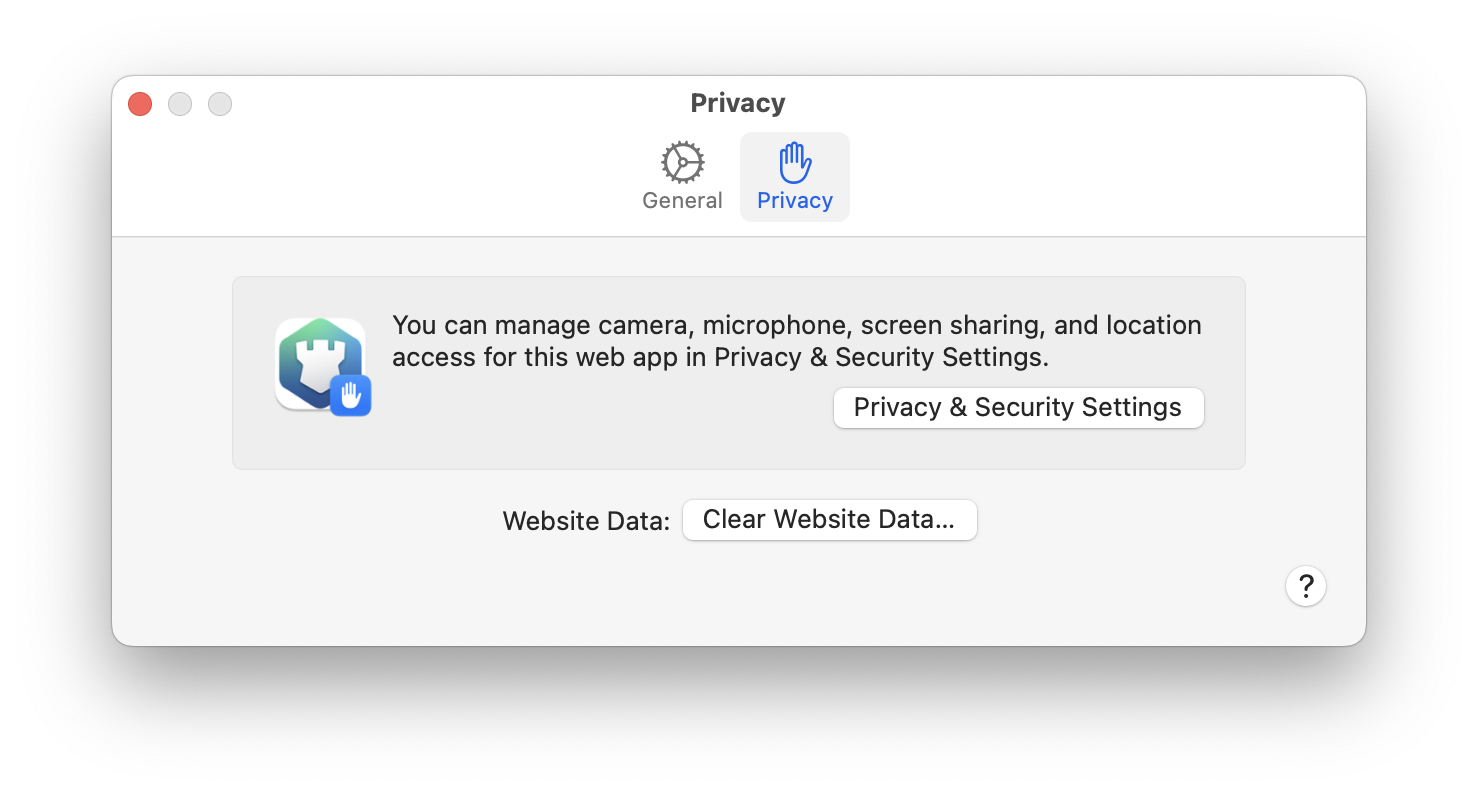
Web apps are a useful feature that can make your browsing more practical. Try them out, and you may find that having individual apps for certain websites you use often makes using certain sites easier.
How can I learn more?
Apple’s page about Safari web apps has a few more details about the technology.
Each week on the Intego Mac Podcast, Intego’s Mac security experts discuss the latest Apple news, including security and privacy stories, and offer practical advice on getting the most out of your Apple devices. Be sure to follow the podcast to make sure you don’t miss any episodes.
You can also subscribe to our e-mail newsletter and keep an eye here on The Mac Security Blog for the latest Apple security and privacy news. And don’t forget to follow Intego on your favorite social media channels: ![]()
![]()
![]()
![]()
![]()
![]()
![]()
